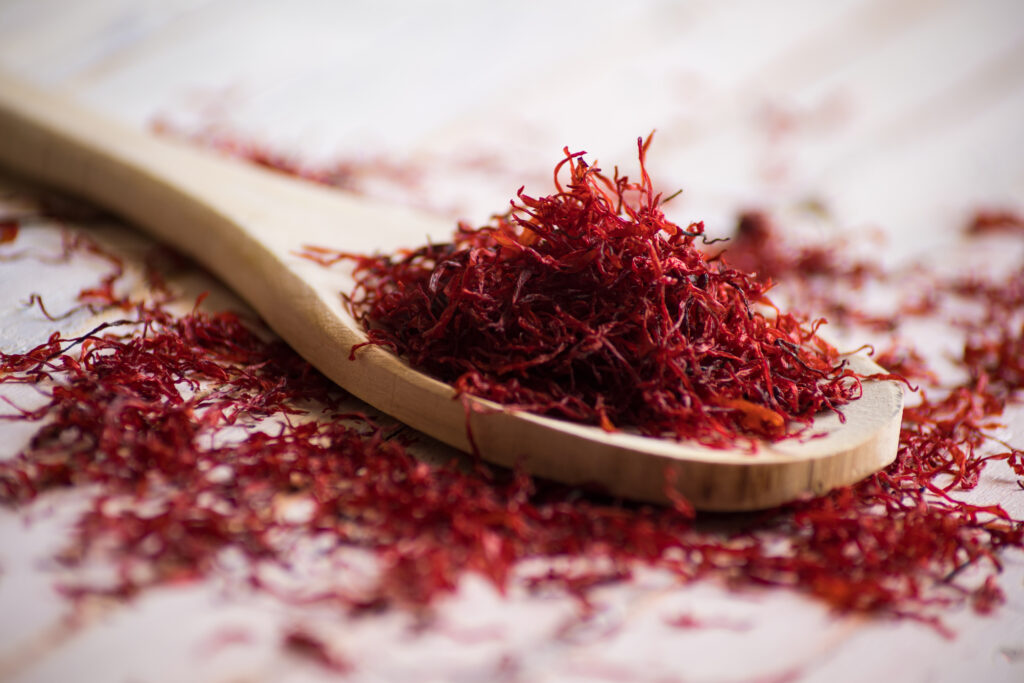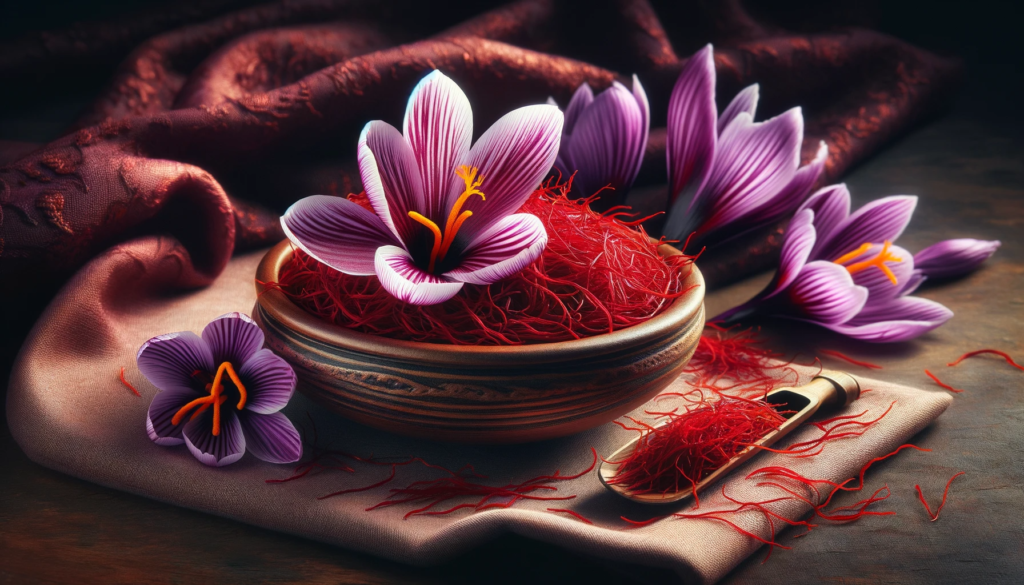Saffron Unveiled: A Spice Like No Other
Understanding Saffron: From Color to Flavor
Saffron, often revered as the most luxurious and expensive spice in the world, is cherished for its unique color, flavor, and aroma. Obtained from the stigmas of the Crocus sativus flower, it takes thousands of these delicate threads to make just one ounce of saffron. This spice is highly valued for its distinct vibrant golden hue and subtle, complex flavor profile — a combination of floral, earthy, and honey-like notes. Its ability to impart a rich color and elegant flavor makes saffron a prized ingredient in various culinary traditions, particularly in North African cuisine.
The Historical and Cultural Significance of Saffron in North Africa
Saffron holds a place of prestige in North African history and culture. It has been used for centuries, not just as a culinary ingredient, but also in traditional medicine and ceremonies. In North African cuisine, saffron is occasionally used in special dishes, celebrating its luxurious nature. It’s often reserved for festive occasions or gourmet recipes, reflecting the region’s rich culinary heritage and the spice’s historical value as a symbol of wealth and hospitality.
The Role of Saffron in North African Culinary Traditions

Saffron in North African Dishes: A Touch of Luxury
In North African cuisine, saffron is used to add both color and a complex layer of flavor to a variety of dishes. It is particularly valued in rice dishes, like the Moroccan Biryani, where saffron imparts its signature golden hue and a subtle but distinct taste. Saffron is also a key ingredient in traditional stews and tagines, providing a depth of flavor that cannot be replicated with any other spice. Its inclusion in such dishes is a sign of hospitality and refinement, reserved for special occasions and esteemed guests.
Signature North African Recipes Featuring Saffron
Among the signature recipes that feature saffron in North African cooking are classic Moroccan tagines, where its addition enhances the dish’s aromatic and flavorful profile. Saffron is also used in couscous recipes, seafood dishes, and in the preparation of luxurious sauces that accompany various meats and vegetables. In each of these dishes, saffron not only contributes its distinctive flavor and color but also elevates the dish to a level of culinary excellence.
Cooking with Saffron: Tips and Techniques
Selecting and Storing Saffron for Optimal Use
When selecting saffron, look for threads (stigmas) that are uniformly red, indicating high quality and potency. Saffron can be found in both thread and powdered form, but threads are generally preferred as they retain their flavor longer. Store saffron in an airtight container in a cool, dark place to preserve its color and aroma. Proper storage can keep saffron fresh for several years, although its peak flavor is best enjoyed within the first year of purchase.
Best Practices for Cooking with Saffron
To maximize the flavor of saffron in cooking, a small amount should be steeped in hot water, broth, or milk for at least 10 to 15 minutes before adding it to dishes. This process releases the spice’s flavorful and aromatic compounds. Saffron is ideal for slow-cooked dishes where its flavor can infuse throughout the cooking process. Since it’s a potent spice, a little goes a long way. It pairs well with ingredients like seafood, rice, and chicken, and can be used in both savory dishes and desserts.

Beyond North Africa: Saffron in Global Cuisine
The Use of Saffron in World Cuisines
Saffron’s allure is not limited to North African cuisine; it’s a celebrated ingredient in many world cuisines. In Spanish cooking, saffron is essential in dishes like paella, imparting its distinct flavor and color. It’s also a key ingredient in Italian risottos, such as Risotto alla Milanese, and in various Indian dishes, including biryanis and sweets like kheer. The spice’s ability to add both a luxurious hue and a nuanced flavor profile makes it sought-after in gourmet cooking around the globe.
Contemporary Culinary Innovations with Saffron
In modern culinary trends, saffron is being used in innovative ways, transcending traditional boundaries. Chefs are experimenting with saffron in fusion dishes, desserts, and even in cocktails, showcasing its versatility. It’s used to create distinctive flavors in ice creams, pastries, and sophisticated sauces. The continued popularity of saffron in global cuisine reflects its timeless appeal and the creative possibilities it offers to contemporary chefs and home cooks alike.
Exquisite Recipes: Incorporating Saffron into Your Cooking
Classic North African Dishes Enhanced with Saffron
Infuse classic North African dishes with the luxury of saffron. Prepare a traditional Moroccan Saffron Chicken Tagine, where saffron adds depth and a beautiful color to the dish. Another option is a Saffron-Infused Couscous, perfect for a fragrant and colorful side dish. For seafood lovers, a Saffron and Seafood Stew brings together the flavors of the ocean with the richness of saffron.
Modern Dishes with a Saffron Twist
Explore modern culinary creations with a touch of saffron. A Saffron Risotto brings a North African twist to this Italian classic, while a Saffron-Infused Roasted Vegetable Medley offers a flavorful vegetarian option. For a sweet finish, a Saffron and Pistachio Ice Cream can be an exquisite dessert that combines the luxurious spice with nutty flavors.
Saffron in North African Cuisine: FAQs
1. What Is the Best Way to Extract Flavor from Saffron?
The best way to extract saffron’s flavor is by steeping the threads in hot water, broth, or milk for about 10 to 15 minutes. This process releases the spice’s color and flavor, which can then be added to dishes.
2. How Much Saffron Should Be Used in Cooking?
Saffron is a potent spice, so a small amount goes a long way. Typically, a pinch of saffron threads (about 20-30 threads) is sufficient to flavor most dishes.
3. How Should Saffron Be Stored to Maintain Its Quality?
Saffron should be stored in an airtight container in a cool, dark place. Avoid exposure to light and moisture, as these can degrade the quality of the spice. Stored properly, saffron can maintain its flavor for up to two years.
4. Is Saffron Used Only for Its Flavor and Color?
While saffron is prized for its unique flavor and color, it’s also used for its potential health benefits. Saffron contains antioxidants and has been associated with mood-enhancing properties, among other health benefits.
5. What Are Some Common Pairings with Saffron in Cooking?
Saffron pairs well with a variety of ingredients, including seafood, chicken, rice, and vegetables. It complements other spices like turmeric and cumin and works well in dishes with creamy or citrus elements.
6. Can Saffron Be Grown at Home?
Growing saffron at home is possible, but it requires specific conditions. Saffron crocuses need a temperate climate and well-drained soil. However, the process is labor-intensive, as saffron is harvested from the stigmas of the flowers.
7. Why Is Saffron Considered One of the Most Expensive Spices?
Saffron is one of the most expensive spices due to its labor-intensive harvesting process. Each saffron crocus flower contains only three stigmas, which must be handpicked. It takes thousands of these stigmas to produce just an ounce of saffron.
